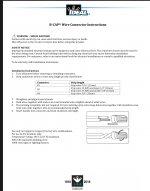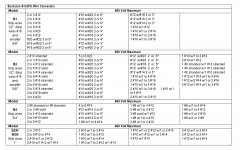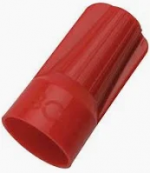Jimmy7
Senior Member
- Location
- Boston, MA
- Occupation
- Electrician
I have been using the Buchanan B2 Red off and on for years. Have you ever used them? I was just recently told that they are not listed for stranded to solid connections. I was told that they are listed for solid to solid and solid, and stranded to stranded connections. Have you used them for solid to stranded connections? If so, has there ever been an issue? Do you think there ever will be? Is this just an issue that they never did the testing to have them listed for a solid to stranded connection?




